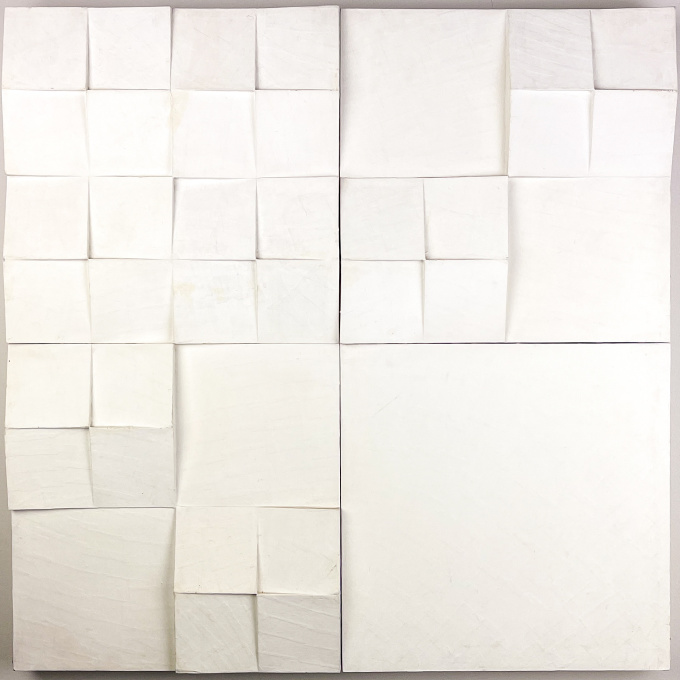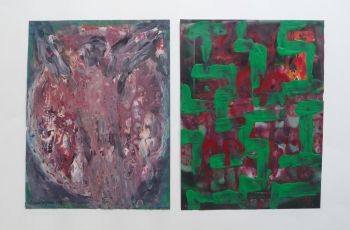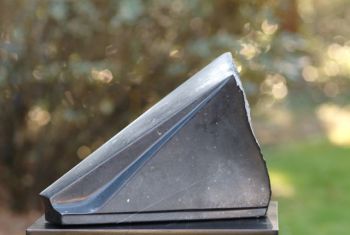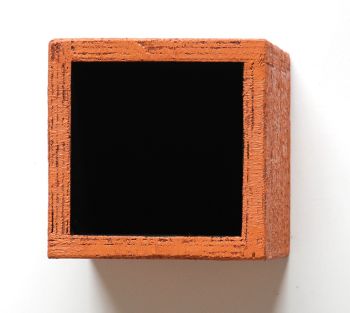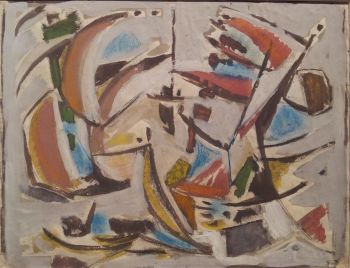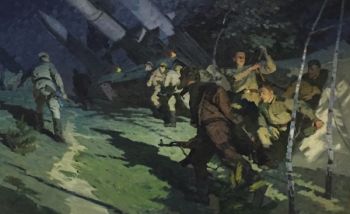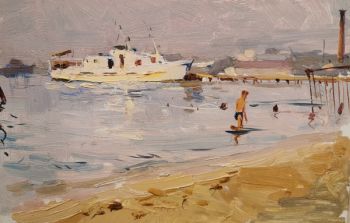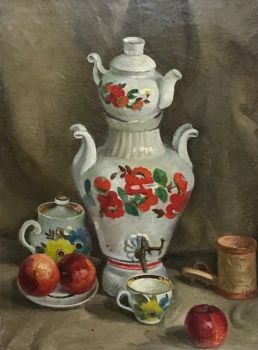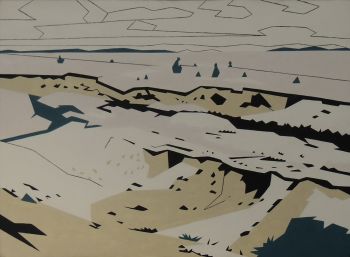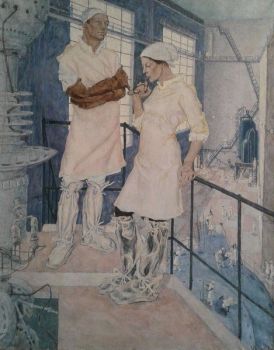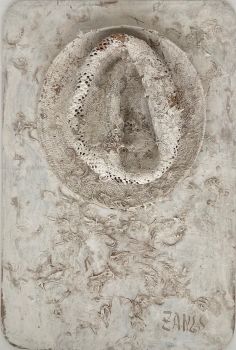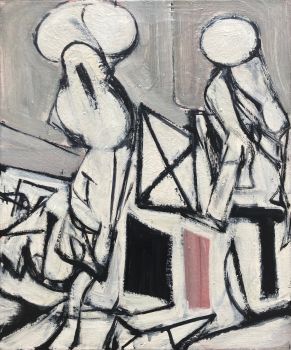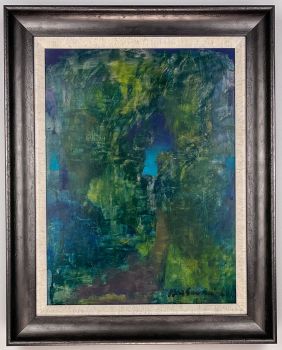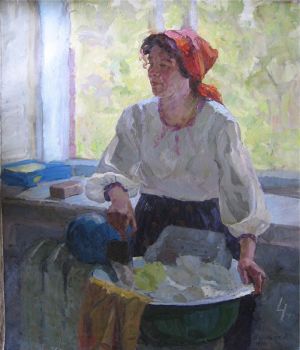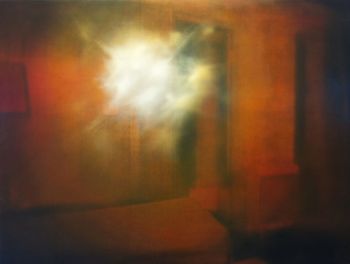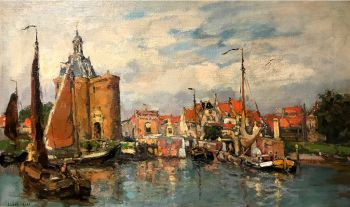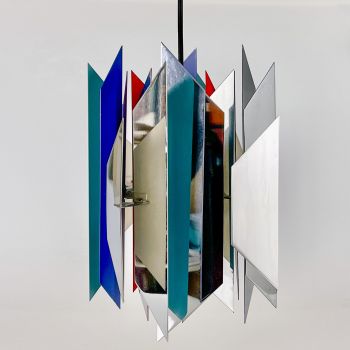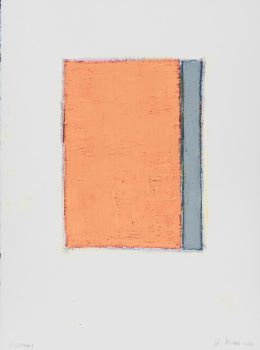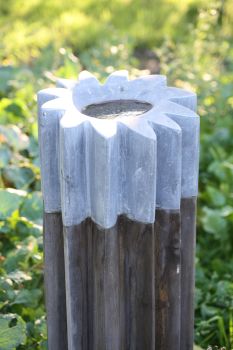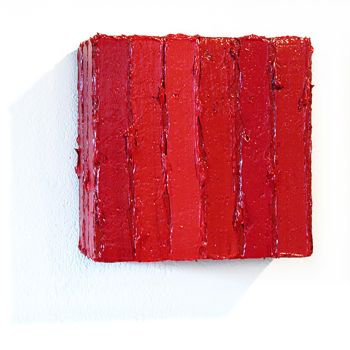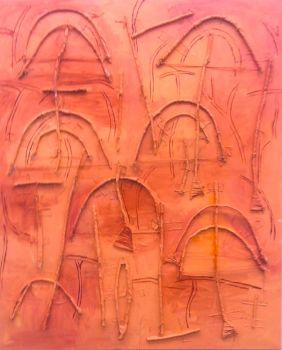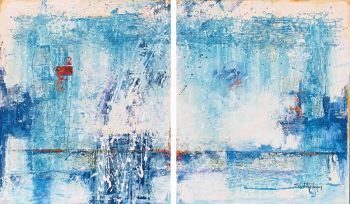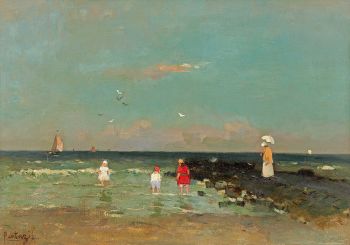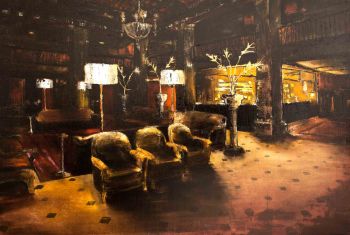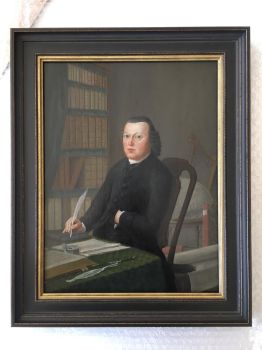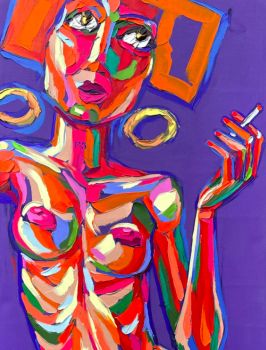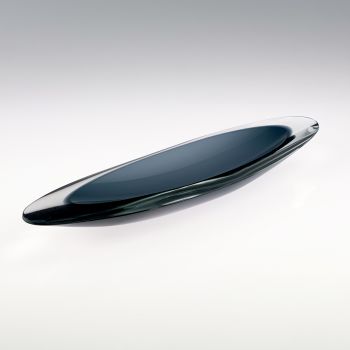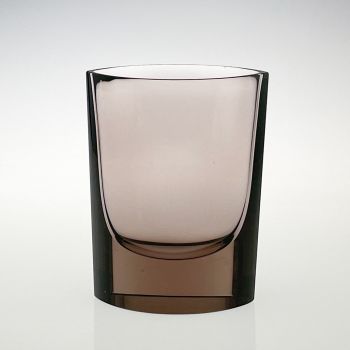Jaap Egmond – “IH 11-IH 12-IH 15-IH 16”, 1976 – relief: paper mache on wood, painted 1976
Jaap Egmond
WoodPapier-machéPaint
80 ⨯ 80 ⨯ 6 cm
ConditionGood
Price on request
Van Kerkhoff Art
- About the artworkAn original relief – painted paper mache on wood – by the Dutch artist Jaap Egmond. Sculpted in May and June 1976. Signed, titled and dated by the artist. The relief consists of four pieces each signed, titled and dated on the reverse, merged together in the final artwork. In clockwise order (seen from the front) the quarters are titled “IH 11”, “IH 12”, “IH 15” and “IH 16”. Jaap Egmonds works are very mathematically driven – very much in contrast with his inspirer Jan Schoonhoven. This work is a prime example of this where the diagonally opposite quarters complement each other mathematically.
About Jaap Egmond
Jacob Johannes (Jaap) Egmond (New York City 1913 – Amstelveen 1997) was a Dutch artist, sculptor, painter, teacher and also a gifted pianist.
Born in New York as the son of a captain on the deep sea, moved back to the Netherlands with his family due to the threat of World War I. He grew up in Amsterdam and completed his training as a drawing teacher at the Rijksinstituut tot Opleiding van Tekenleraar from 1932 to 1936. In his early years, he also studied piano at the Amsterdam Conservatory of Music.
After his training, Egmond started working as a drawing teacher at several schools in Amsterdam in 1937, which was the beginning of a lifelong dedication to teaching. After the war, he taught at the Vossius Gymnasium and later at the Kweekschool and the Pedagogical Academy in Amsterdam. In collaboration with colleague Klaas de Poel, he developed a new teaching method for the Teacher Training College.
In 1969, Jaap Egmond settled as an artist in Amstelveen. During his career, he made abstract reliefs, strongly influenced by the work of Jan Schoonhoven, with which he became a representative of minimalism in the Netherlands in the 1970s and 1980s. His work, ranging from cardboard and paper to freestanding work in steel, was characterised by the play of light and shadow and monochromy.
Egmond exhibited his art from the early 1970s in galleries and art institutions. In the 1980s, he also experimented with total theatre, with his large plastics serving as sets for modern music performances, in collaboration with Wim de Ruiter.
Jaap Egmond is remembered as a constructivist artist, whose work is influenced by the Dutch Zero movement. His creations reflect a constant search for form, light and shadow, and monochromy, through which he left a lasting impact on Dutch art.
Signed
Signed, titled and dated by the artist on the reverse
Condition
Good original condition, some stains, small water-damage on the side.
Provenance
Borzo Gallery, Amsterdam
Dimensions
Artwork
Height 80 cm
Width 80 cm
Depth 6 cm - About the artist
Jacob Johannes (Jaap) Egmond (born August 31, 1913 in New York, died November 26, 1997 in Amstelveen) was a versatile Dutch artist, known for his work as a sculptor, painter, and teacher, as well as his skills as a pianist.
Egmond has made a significant contribution to art education and theory, especially in the areas of art appreciation and drawing education.
His oeuvre, which mainly consists of abstract reliefs, shows a clear affinity with the work of Jan Schoonhoven and places him as a leading figure within the minimalist movement in the Netherlands during the 1970s and 1980s.
Born in New York as the son of a captain, Egmond moved with his family back to the Netherlands due to the threat of World War I, where he grew up in Amsterdam. Between 1932 and 1936 he trained as a drawing teacher at the National Institute for the Training of Drawing Teachers in Amsterdam, after first studying piano for a year at the Amsterdam Conservatory.
After his education, he started as a drawing teacher in Amsterdam in 1937, a role he would fulfill throughout his career. After the Second World War he taught at the Vossius Gymnasium and later at the Pedagogical Academy in Amsterdam, where he taught drawing, manual labor and art history.
In the 1960s, together with colleague Klaas de Poel, he developed an innovative teaching method for the Kweekschool, which was included in various textbooks.
In 1969, Egmond settled as an artist in Amstelveen, where he focused on creating hundreds of reliefs in cardboard and paper, later followed by experiments with steel and painting. In the 1980s he worked with Wim de Ruiter on total theater projects, in which his large sculptures formed a dynamic backdrop for modern musical performances.
Egmond, who in his younger years hesitated between a career as a pianist or an art teacher, later acted as an accompanist for singers within a closed circle. He was married to Joke Sprokkereef (1918-1986), a teacher, and together they had four children. The family lived in Amstelveen after the Second World War.
As an artist, Egmond is considered a constructivist, strongly influenced by the Dutch Zero movement. His work is characterized by the use of light and shadow and a preference for monochromy, with which he has made a unique contribution to Dutch modern art.
Are you interested in buying this artwork?
Artwork details
Related artworks
- 1 - 4 / 24
 Curated by
Curated byGallerease Magazine
1 - 4 / 24- 1 - 4 / 24
Børge Mogensen
Teak wood “dropleaf” desk – Søborg Møbler, Denmark circa 19551950 - 1960
Price on requestVan Kerkhoff Art
1 - 4 / 12

